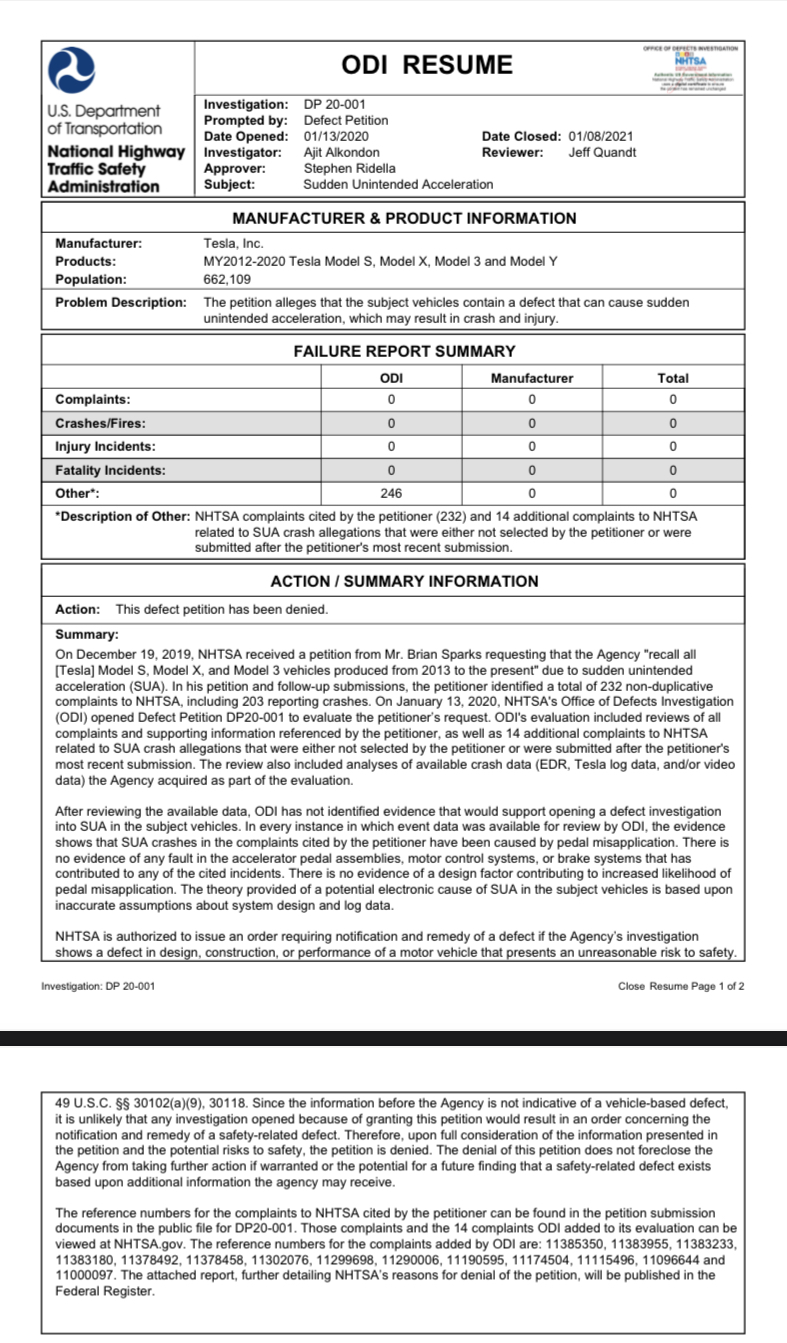(Cover image source: Shutterstock)
The National Highway Traffic Safety Administration (NHTSA) has released the results of its investigation into sudden unintended acceleration (SUA) incidents involving Tesla vehicles, stating that the cause of these incidents was due to drivers “improperly pressing on the accelerator pedal”, or in other words, pressing on the wrong pedal.
According to the NHTSA’s report:
After reviewing the available data, ODI (Office of Defects Investigation) has not identified any defects in the design or performance of the accelerator pedals, motor control systems, or brake systems which would likely lead to the reported incidents. In each of the incidents, where pedal misapplication was indicated and of which vehicle data was available, the recorded vehicle data showed that the accelerator pedal was incorrectly applied, including cases where pedal was pressed for the first time due to vehicle movement or unintended acceleration. There is no evidence of an underlying defect in NHTSA’s review of the incidents or in any examination of vehicle data. Further, analysis has not found evidence of a design factor contributing to increased likelihood of pedal misapplication. The theory provided of a potential electronic cause of SUA in the subject vehicles is based upon inaccurate assumptions about system design and log data.

Last December, the NHTSA received 127 petitions and began investigating incidents of sudden unintended acceleration of Tesla vehicles. Tesla responded by stating that for all the incidents cited in the petitions, vehicle logs showed that the unintended acceleration was caused by drivers pressing on the wrong pedal. After the NHTSA released its investigation results, Tesla also issued a statement, indicating that the petitions submitted to the NHTSA were from Tesla’s short sellers.
Click here to download the full ODI report.
🔗Source: Electrek
This article is a translation by ChatGPT of a Chinese report from 42HOW. If you have any questions about it, please email bd@42how.com.
